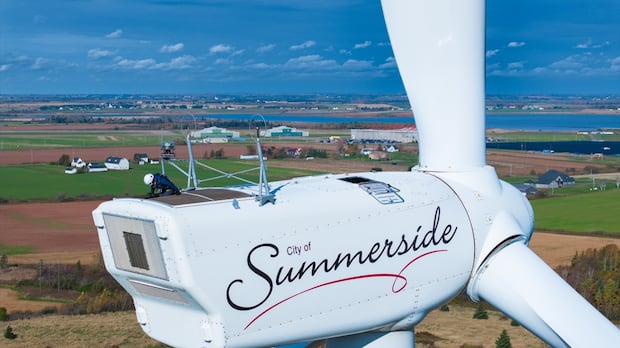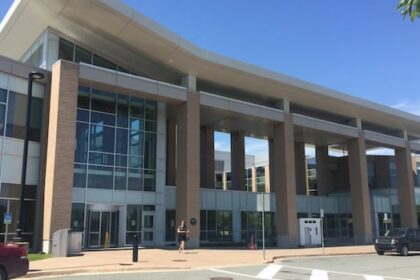PEIPrince Edward Island’s energy system is under increasing strain as power demands rise, and the City of Summerside says it wants to play a larger role in generating electricity to help meet that need.‘Time is ticking’ for province’s power grid, says Mayor Dan KutcherThinh Nguyen · CBC News · Posted: Oct 23, 2025 7:08 PM EDT | Last Updated: 2 hours agoListen to this articleEstimated 6 minutesSummerside wants to generate more power — and distribute it across P.E.I.With electricity demands on the way up in the province, the City of Summerside says it wants to see legislative changes that would allow its publicly owned utility to generate and distribute more power across the Island. CBC’s Cody MacKay has the details. Prince Edward Island’s energy system is under increasing strain as power demands rise, and the City of Summerside says it wants to play a larger role in generating electricity to help meet that need.That message was delivered Thursday to MLAs during a standing committee meeting with officials from both the P.E.I. Energy Corporation and Summerside Electric.New Brunswick Power recently warned that, with growing demand, that province could face an electricity shortage as early as 2028.Such a crunch would have direct consequences for P.E.I. if this province doesn’t start to produce more of its own energy.”The time is ticking,” Summerside Mayor Dan Kutcher told MLAs during the meeting. “Those numbers are 2027-28 for all of us – it’s already 2026, pretty much. The time is really short.” Summerside wants greater controlP.E.I.’s power grid has long relied on two submarine cables that connect the Island to the mainland and the electricity purchased from New Brunswick Power.Summerside Electric generates about 60 per cent of its electricity through renewable sources like solar and wind, but it still relies on Maritime Electric’s transmission system for power that the smaller utility buys from New Brunswick.WATCH | How does P.E.I.’s electrical grid even work?:How does P.E.I.’s electrical grid even work? CBC ExplainsWith recent outages shining a light on the fact that the P.E.I. electrical grid is nearing capacity, you may be wondering how the Island gets power in the first place — or what the difference is between Summerside Electric and Maritime Electric. Here’s a breakdown from CBC’s Cody MacKay.A failure at a Maritime Electric substation north of Summerside led to a series of power disruptions last winter. Meanwhile, demand for energy within the city continues to grow each year as hundreds of residents switch from fossil fuels to renewable heating systems. Kutcher told MLAs Thursday that the city needs direct access to the underwater cables from New Brunswick, without having to rely on Maritime Electric to deliver that power.“The forecast, not just for Summerside but for all of Prince Edward Island, is concerning in terms of energy security and making sure the lights can stay on for people. Not just this year, next year, but into the future,” he told CBC News following the meeting. “I think I said in there that this is the most essential service that we have in P.E.I., and I certainly believe that.” Garrett Webster, senior utility engineer for Summerside Electric, said the city also needs more diesel — and cleaner — generators to keep up with demand. He added that legislative changes are required to allow Summerside to generate and distribute more of its own power around P.E.I.“We need the ability to turn a button or a lever on to receive power at the time the customers ask for power…. The whole province needs these assets,” Webster said.“It’s not just Summerside, it’s not some other party, it’s the whole team [that] needs to get together and work collaboratively to a solution for the whole Island.”Garrett Webster, senior utility engineer for Summerside Electric, says the city needs more diesel and clean generators to keep up with the demand for electricity. (Jane Robertson/CBC)Maritime Electric currently has an application before the Island Regulatory and Appeals Commission to purchase two 50-megawatt combustion turbines at a cost of $334 million. Those talks are happening primarily among Maritime Electric, IRAC and the Progressive Conservative government. Summerside wants a seat at the table, too. “We’ve got a team player sitting on the bench wanting to get in the game. So [our] message to the committee is, take it to the coach that we’d like a little more ice time,” Kutcher said. “The coach is going to be the province, as always. We respect the coach.”The city’s next step is putting in writing exactly what legislative changes it recommends in order for it to have a wider ability to generate and distribute power on P.E.I. Tyler DesRoches, the PC MLA for Summerside-Wilmot, told CBC News he plans to push government to make those changes happen.Island-wide pressure on the gridAcross the province, officials say rising demand is putting increased strain on the energy system.Gordon MacFadyen, CEO of the P.E.I. Energy Corporation, told MLAs that population growth and electrification have caused peak loads to climb sharply — from 265 megawatts in 2015 to 359 in 2023. That record high occurred during a polar vortex, when temperatures dropped to -23.8 C.“The curve on electricity usage is really ramping up worldwide, and we’re no different than that,” MacFadyen told MLAs.To meet the growing demand, Maritime Electric has proposed new fossil-fuel generators as part of its IRAC application. But MacFadyen said the solution will need to be a mix of renewable and non-renewable sources.He noted that P.E.I. continues to expand its renewable energy portfolio, particularly in wind power. The expansion of the Eastern Kings Wind Farm is expected to come online in the next few weeks, adding more capacity to the grid.MacFadyen also stressed the importance of educating Islanders about when and how they use electricity, and he noted that Maritime Electric has been working to promote energy literacy.Calls for legislative reformDuring the meeting, Green MLA Peter Bevan-Baker highlighted a key barrier: under P.E.I.’s Renewable Energy Act, the maximum amount of electricity people can produce is capped at 100 kilowatts. In Nova Scotia, that limit is one megawatt — 10 times higher.Gordon MacFadyen, CEO of the P.E.I. Energy Corporation, says the province’s power future lies in renewable energy sources. (Jane Robertson/CBC)Bevan-Baker said P.E.I. now stands at a crossroads — it can continue relying on centralized systems focused on large fossil-fuel projects, or it can move toward a distributed model that allows communities, farmers and non-profits to generate renewable energy.That, he said, would require legislative change.“Are you in favour of liberalizing, deregulating our energy system here on Prince Edward Island in the same manner it has been done in Nova Scotia to allow communities, farmers, small businesses, non-profits, to provide and create energy for our grid?” Bevan-Baker asked.“The answer is yes,” MacFadyen replied. “I think we need to be 2.0 of what we have here today to get it expanded.”MacFadyen added that achieving that goal will require legislative reform, and said related changes may be addressed in the province’s upcoming energy strategy.With files from Cody MacKay
As P.E.I. faces rising energy strain, Summerside is pushing to play a bigger role










